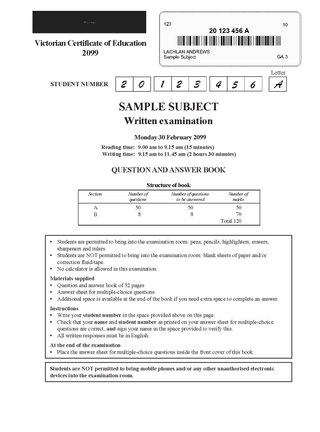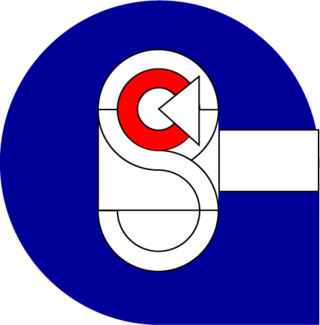
The Victorian Certificate of Education is one credential available to secondary school students who successfully complete year 11 and 12 in the Australian state of Victoria as well as in some international schools in China, Malaysia, Philippines, Timor-Leste and Vietnam. The VCE is the predominant choice for students wishing to pursue tertiary education. An alternative to VCE is the Victorian Certificate of Applied Learning (VCAL), a vocational based senior secondary school qualification. About 67% of all 19-year-olds in Victoria had completed the VCE in 2020, compared to about 11% of students completing the VCAL. A small number of government secondary schools, and a somewhat larger number of private schools, offer the IB Diploma Programme as an alternative.
Further Mathematics is the title given to a number of advanced secondary mathematics courses. The term "Higher and Further Mathematics", and the term "Advanced Level Mathematics", may also refer to any of several advanced mathematics courses at many institutions.
University admission or college admission is the process through which students enter tertiary education at universities and colleges. Systems vary widely from country to country, and sometimes from institution to institution.
The Equivalent National Tertiary Entrance Rank (ENTER) was the national Australian tertiary entrance rank, administered by Universities Australia. It was a percentile ranking, designed to simplify the comparison of entrance levels for students educated in different processes of admission for university applicants from interstate. It was replaced by the Australian Tertiary Admission Rank from 2010.
The Tertiary Entrance Rank (TER) was a tertiary entrance score used in several Australian states, the ACT and the Northern Territory as a tool for selection to universities in Australia. As of 2010, it has been replaced by the Australian Tertiary Admission Rank (ATAR) in all states and territories.

The Victorian Curriculum and Assessment Authority (VCAA) is a statutory authority of the Victoria State Government responsible for the provision of curriculum and assessment programs for students in Victoria, Australia. The VCAA is primarily accountable to the Victorian Minister for Education. It is also responsible to the Minister for Training and Skills and the Minister for Families and Children in relation to sections of Part 2.5 of the Education and Training Reform Act 2006.
The General Achievement Test is a test of general knowledge and skills including communication, mathematics, science and technology, the arts, humanities and social sciences in the Australian state of Victoria.
Mathematics education in Australia varies significantly between states, especially at the upper secondary level. While every school offers a state-based education systems, some may also offer the International Baccalaureate program.

Gisborne Secondary College is a co-educational secondary school located in Gisborne, Victoria, established in 1981. The current enrolment is 1071 students. Students attend from years seven to twelve. The college serves a large proportion of the southern Macedon Ranges district in Victoria, with over 800 students attending school via school bus. The College has a large range of subject offerings, including electives from Year 9 onwards, and at the Senior School, VCE, VCE-VM, and VET programs.

The Tasmanian Certificate of Education (TCE) is the main credential awarded to secondary school students who successfully complete senior high school level studies in Tasmania, Australia. It was introduced in 1992 to replace Tasmania's old "High School Certificate", and partially restructured for 2007.

Tertiary education in Australia is formal education beyond high school, consisting of both government and private institutions and divided into two sectors; vocational education and training and higher education. 69% of Australians aged 20–64 have a non-school qualification, and 24% have multiple qualifications. For admission in universities, Australian or New Zealand citizen or an Australian permanent resident, are considered "domestic students" whether they did the prior schooling in Australia or overseas, all others are considered "international students". Domestic students apply only once to the unified TACs of the relevant state for admission to all the universities within that state. Domestic students usually pay lot less fees compared to International students. The domestic students are entitled to various social security welfare payments & benefits which international students are not, e.g. Austudy Payment, Youth Allowance, etc. All non-domestic students apply individually to each University, and most international students are self-financed.

The Universities Admissions Centre is an organisation that processes applications for admission to tertiary education courses, mainly at institutions in New South Wales and the Australian Capital Territory. A not-for-profit company incorporated in July 1995, it has offices located at Sydney Olympic Park.

The South Australian Tertiary Admissions Centre (SATAC) is the administrative body that processes tertiary course applications for universities in South Australia and the Northern Territory, Australia. It is a member of the Australasian Conference of Tertiary Admission Centres (ACTAC).

Education in Victoria, Australia is supervised by the Department of Education and Training (DET), which is part of the State Government and whose role is to 'provide policy and planning advice for the delivery of education'. It acts as advisor to two state ministers, that for Education and for Children and Early Childhood Development.
Teaching in Victoria, Australia is regulated by the Victorian Institute of Teaching, through the Department of Education and Training (DET), which is part of the State Government. The DEECD is biggest operator of schools in the state, and along with the independent and Catholic school systems have an interest in teaching as the operator of schools and employer of teachers.
The Senior Secondary Certificate of Education (SSCE) is the graduation certificate awarded to most students in Australian high schools, and is equivalent to the Advance Placement in North America and the GCE A-Levels of the United Kingdom. Students completing the SSCE are usually aged 16 to 18 and study full-time for two years. In some states adults may gain the certificate through a Technical and Further Education college or other provider.

The Australian Tertiary Admission Rank (ATAR) is the primary criterion for domestic student entry into undergraduate courses in Australian public universities. It was gradually introduced to most states and territories in 2009–10 and has since replaced the Universities Admission Index, Equivalent National Tertiary Entrance Rank, Tertiary Entrance Rank and the Overall Position. It is a percentile ranking between 0.00 and 99.95 which shows the student’s relative position compared to all other students completing their secondary school certificate exams in that year. Though ATARs are calculated independently by each state, their equivalence is checked nationally through the Australasian Conference of Tertiary Admission Centres (ACTAC). Since some students quit studying early or do not qualify for an ATAR, the average ATAR amongst students who achieve one is 70.00. Admission to universities is granted based on the "selection rank" calculated by each university based on its own unique criteria. Selection ranks are a combination of ATAR, additional points based on universities' own criteria used for selecting students such as a "personal statement, a questionnaire, a portfolio of work, an audition, an interview or a test", as well as special considerations. Some universities also provide additional points on the basis of disadvantage such as for rural, Indigenous Australian or financially suffering applicants.

Suzanne Cory High School is a government-funded mixed-sex academically selective secondary day school located in Werribee, in the western region of Melbourne, Australia. The school caters for students from Year 9 to Year 12. Enrolment is offered to those having reached a high aptitude in the annual selective entry high schools entrance examination run by the Department of Education and Early Childhood Development.

The Tertiary Institutions Service Centre (TISC) is the administrative body that processes tertiary course applications for universities and other tertiary institutions in the state of Western Australia. It is a member of the Australasian Conference of Tertiary Admission Centres (ACTAC).











